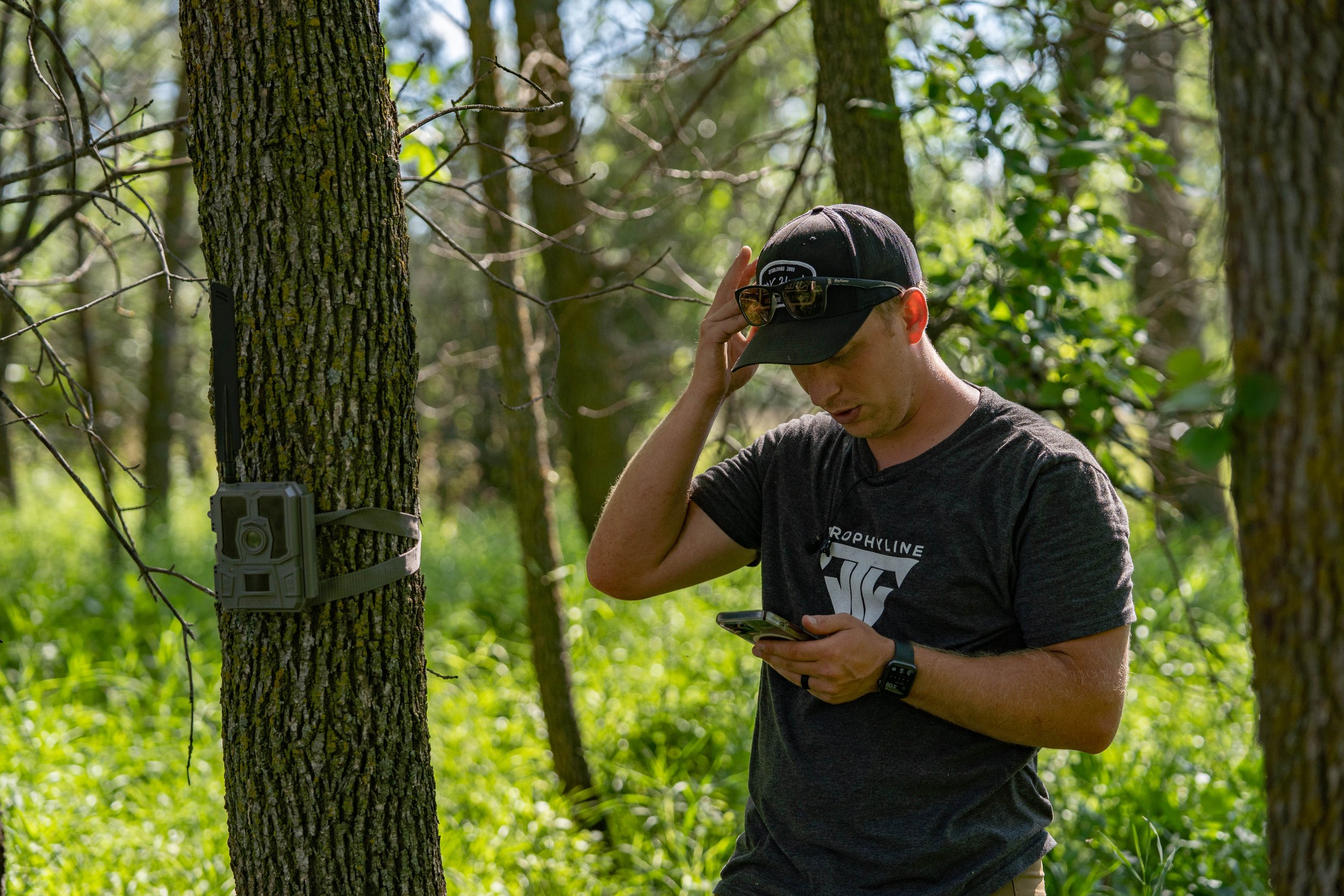By Alex Comstock
Trail cameras can help a deer hunter in more ways than one. It seems to me that during the physical season, trail cameras are more helpful to locating certain bucks, they give you information on where deer are at a given moment, and many times hunters are playing catch up, hunting based off of trail camera pictures from a week or so prior. If you want to get ahead of the game, right now is the best time of the year to study and dissect not only this past seasons photos, but years priors as well.
By learning trends and tendencies of deer in your hunting area right now, you can use that information to help you become successful next season. It's hard to get into the detail and take the time to start going through pictures in the middle of the season while you're actively hunting. The hunting season is when you gather all of the information through trail cameras and sightings in the field, and right now is the time to go through that information to learn those trends and tendencies.
What To Look For: In order to learn as much about your hunting property as possible, don't go looking through pictures, and only pay attention to the surface information. To actually learn information that will significantly help you become a better hunter, get into the nitty gritty details. Whether you take notes, store everything in your head, or use a program such as DeerLab, one way or another you need a way to process the information you come up with.
I will first go through all of my pictures from the year before of bucks that I was targeting. I'm primarily looking at when they were moving in daylight. I will get all of the concrete facts that come with each daylight showing. What was the wind, the barometric pressure, the temperature, etc. etc. For each daylight showing I will do this. I'll then go to the next buck, and do the same thing. I'll go through all of his photos from the year, gather the information from daylight appearances, and then go on to the next one. After finishing this up with my target bucks, and having all of the information organized, I then turn my attention to potential target bucks for next year, and do the same thing. Any buck that I know of that I think could potentially be on my radar for next year, I will go through my pictures and highlight when they were moving in daylight, and every condition that came with it.
Interpreting The Data: After I have done this for all of my target bucks and potential target bucks, I will then look for patterns. Was their a certain area a buck showed up in daylight with certain conditions? I want know to the best of my ability why a buck was where he was in daylight. Mature bucks don't show themselves often during the hours of the day when you can hunt them, and when they do, it's for a reason. You need to figure out that reason. You might find interesting patterns such as 80% of your daylight pictures from target bucks came the day after a high pressure system moved through, and the barometric pressure was above 30.0. Maybe a certain buck would only come through an area if there was a South wind (A great resource that will allow you to look up any day's weather conditions is Wunderground.com). It's finding small details like these that will help you in the coming years.
After you go through all of your pictures, gather information, and then interpret the data, you need to use it. Next year, hunt based on what you learned. Instead of waiting to get a buck's picture, and then moving in on him, be ahead of the curve. If a buck had a tendency this past season, he more than likely will next year. Use this advantage, and be waiting for him instead of playing catch up.
Conclusion: If you do this every off-season, think about the information you can learn from the whitetail deer. I originally got this idea from Mark Drury, possibly the best whitetail hunter in the world. He does this constantly, and has for years upon years, and it has benefited him greatly. Granted, he is able to run so many trail cameras, he captures about a million pictures a year. But, you don't need to have that ability to still learn. Even if you only use a camera or two, combine the information you get with those, with what you see while in the field. Gather as much information as you can, interpret it, and start to gain an advantage over the ever elusive whitetail buck.































